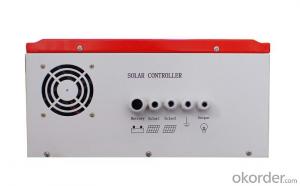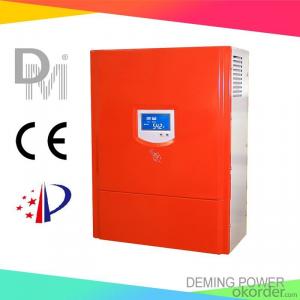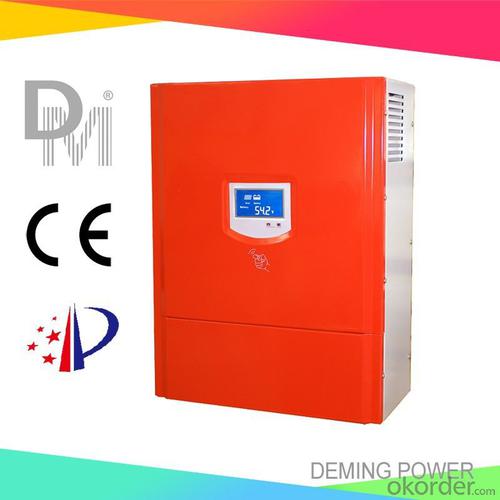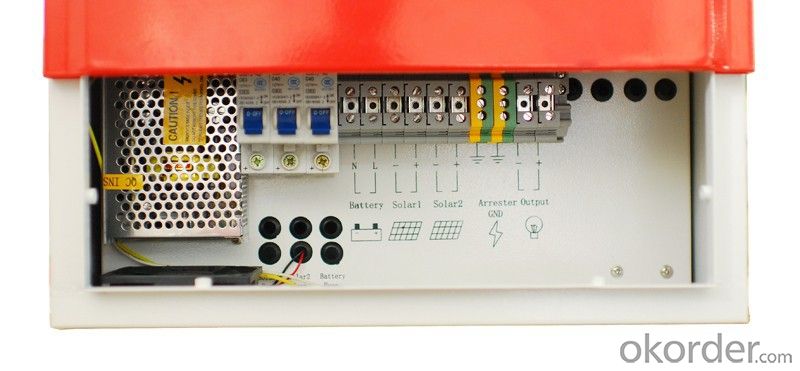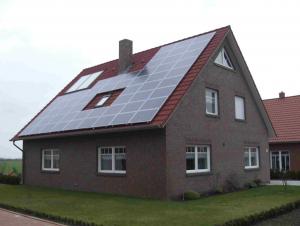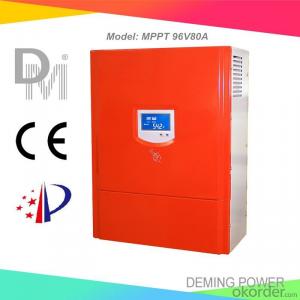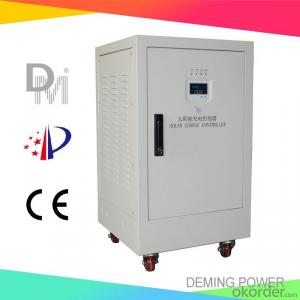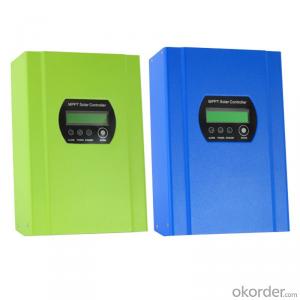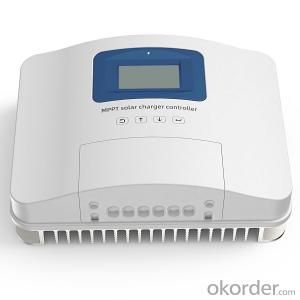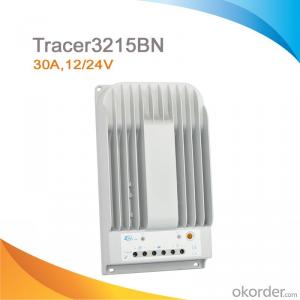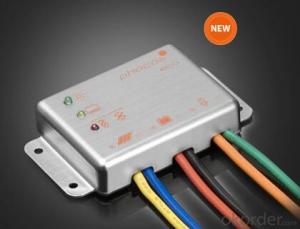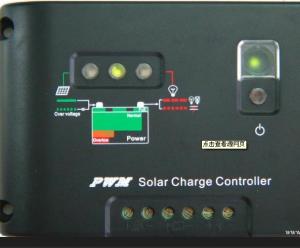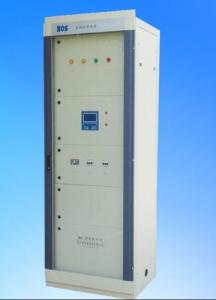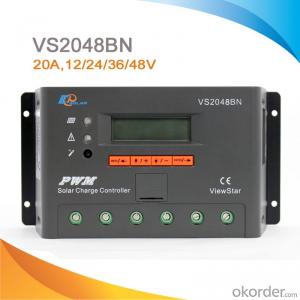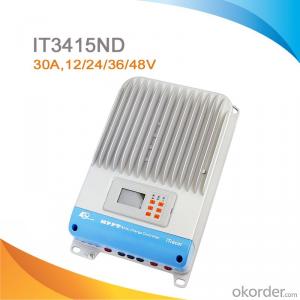2 Solar Charge Controllers MPPT Solar Charge Controller 96V 30A with Best Price for Solar Power System
- Loading Port:
- Qingdao
- Payment Terms:
- TT or LC
- Min Order Qty:
- 1 PCS
- Supply Capability:
- 1000 PCS/month
OKorder Service Pledge
OKorder Financial Service
You Might Also Like
Properties of the solar charge controller
1. Design for off-grid solar power system.
2. Applicable to different kinds of batteries.
3. Modular design with simple structure and easy maintenance.
4. LCD display: Solar panel current, solar panel voltage, solar panel power, battery group voltage, charge current.
Technical parameters of the solar charge controller
Model | 96V30A | |||||
Battery group rated voltage | 96Vdc | |||||
PV Rated current | 30A | |||||
PV open circuit voltage | 400V | |||||
PV Max. power | 2880Wp | |||||
Input PV module road number | 1 | |||||
Function | MPPT charge mode, auto stop charge, auto recharge voltage; Protection: connecting contrary, over current, short circuit, over heat etc. | |||||
Display mode | LCD | |||||
Display content | solar panel voltage, solar panel current, solar panel power, battery voltage, charge current | |||||
MPPT DC voltage rang | 80-116Vdc | |||||
Floating Charge Voltage (adjustable) | 110Vdc | |||||
Stop charge voltage | 116Vdc±1% | |||||
Recharge voltage | 108V±1% | |||||
Voltage drop between PV and battery | 1.5V | |||||
Max itself power consumption | 100mA-150mA | |||||
Work environment temperature | -30-60°C | |||||
Relative humidity | 90% No condensation | |||||
Applicable altitude | 3000m The rated power should be reduced when it is higher than 2000m | |||||
Noise (1m) | 40dB | |||||
Degree of protection | IP20(Indoor) | |||||
Cooling method | Forced air cooling | |||||
*Communication interface (optional) | RS485/USB/GPRS/Ethernet | |||||
*Temperature compensation(optional) | -4mv/°C/2V,-35°C~+80°C,Accuracy:±1°C | |||||
Product size (mm) | 480*370*160mm | |||||
Product Weight(kg) | 12kg | |||||
*Above parameter only for reference. Could be custom made to user specifications.
Image
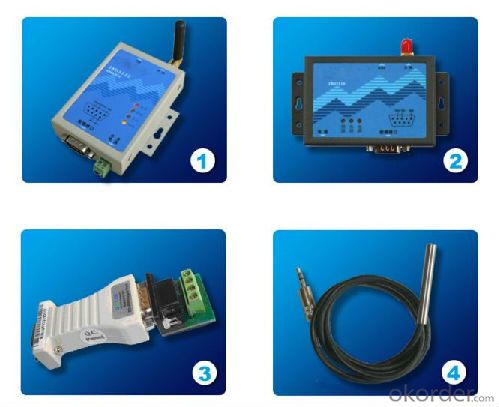
FAQ
Q1:Can we visit your factory? A1:Sure,welcome at any time,seeing is believing. Q2:How to guarantee the Quality of the products? A2:We have established the international advanced Quality management system,every link from raw material to final product we have strict Quality test;We resolutely put an end to unQualified products flowing into the market. At the same time, we will provide necessary follow-up service assurance.
- Q: How does a solar controller prevent battery over-temperature?
- A solar controller prevents battery over-temperature by monitoring the temperature of the battery and regulating the charging current accordingly. It uses temperature sensors to constantly measure the battery temperature and adjusts the charging voltage and current to prevent overheating. This ensures that the battery operates within a safe temperature range, prolonging its lifespan and preventing any potential damage or failure.
- Q: Can a solar controller be used in grid-tied systems?
- No, a solar controller cannot be used in grid-tied systems. Grid-tied systems do not require a solar controller as they are connected to the electrical grid and rely on inverters to convert the DC power generated by solar panels into usable AC power for the grid. A solar controller is used in off-grid systems to regulate and control the charging of batteries.
- Q: What is the role of a USB charging port in a solar controller?
- The role of a USB charging port in a solar controller is to provide a convenient and versatile way to charge electronic devices using solar power. It allows users to connect their devices directly to the solar controller, harnessing the energy from the solar panels to charge their devices efficiently and sustainably.
- Q: How does a solar controller regulate the charging process?
- A solar controller regulates the charging process by monitoring the voltage and current from the solar panels and adjusting the charge rate to prevent overcharging of the batteries. It ensures that the batteries receive the optimal charge while protecting them from damage due to overcharging or undercharging.
- Q: Can a solar controller be used with solar-powered charging stations?
- Yes, a solar controller can be used with solar-powered charging stations. A solar controller helps manage and regulate the flow of electricity from the solar panels to the charging stations, ensuring optimal charging performance and protecting the batteries from overcharging or damage.
- Q: How does a solar controller prevent reverse current flow at night?
- A solar controller is a critical component in a solar power system that regulates the charging and discharging of the batteries. One of the key functions of a solar controller is to prevent reverse current flow at night. During the day, when sunlight is available, the solar panels generate electricity and charge the batteries. However, when the sun sets, the solar panels stop producing electricity, and there is no source of power to charge the batteries. In this situation, if the solar controller did not prevent reverse current flow, the batteries would discharge back into the solar panels, which can cause damage to the panels and decrease the overall efficiency of the system. To prevent reverse current flow at night, a solar controller uses a built-in blocking diode or a solid-state relay. These components allow current to flow from the solar panels to the batteries during the day, but block the flow of current from the batteries back to the solar panels at night. The blocking diode is a one-way valve for electricity, allowing it to only flow in one direction. It is placed in series between the solar panels and the batteries. When the solar panels are generating electricity, the diode allows the current to flow towards the batteries, charging them. However, when the solar panels are not producing electricity, the diode blocks the flow of current from the batteries towards the panels, preventing reverse current flow. Similarly, a solid-state relay is an electronic switch that can be controlled by the solar controller. It is also placed in series between the solar panels and the batteries. When the solar panels are generating electricity, the relay is activated, allowing the current to flow towards the batteries. But when the solar panels stop producing electricity, the relay is deactivated, preventing the flow of current from the batteries towards the panels. By incorporating these mechanisms, a solar controller effectively prevents reverse current flow at night, ensuring that the batteries remain charged and the solar panels are protected from any potential damage.
- Q: What are the indicators and display features typically found on a solar controller?
- Solar controllers, also known as charge controllers, are essential components in solar power systems that ensure efficient charging and protection of batteries from overcharging or discharging. These controllers are equipped with various indicators and display features that provide crucial information about the system's performance. One common indicator found on solar controllers is the battery status indicator. This indicator shows the current state of charge of the battery, usually represented by a series of LED lights or a voltage reading. It allows users to quickly assess the battery's capacity and determine if it requires charging or if it is fully charged. Another important indicator is the solar input indicator, which displays the amount of solar power being generated by the photovoltaic (PV) panels. This indicator can be presented in Watts or Amps, giving users a real-time understanding of the system's energy production. By monitoring this indicator, users can assess the system's efficiency and identify any potential issues, such as shading or malfunctioning panels. Some solar controllers also feature load or output indicators, which show the amount of power being drawn from the battery to power connected loads. This indicator is particularly useful in off-grid systems, allowing users to manage their energy consumption and prevent overloading the battery. Additionally, many solar controllers are equipped with a digital or analog display that provides detailed information about the system's performance. This display often includes parameters such as battery voltage, charging current, load current, and ambient temperature. These readings enable users to have a comprehensive overview of the system's operation and make informed decisions regarding energy usage and maintenance. Furthermore, advanced solar controllers may include additional display features such as data logging capabilities or communication interfaces. Data logging allows users to analyze historical data and track trends in energy production and consumption, aiding in system optimization. Communication interfaces, such as USB or RS485 ports, enable the controller to connect to external devices or monitoring systems for remote monitoring and control. In summary, the indicators and display features typically found on a solar controller include battery status indicators, solar input indicators, load or output indicators, as well as digital or analog displays showing various system parameters. These features provide users with essential information to monitor and manage their solar power systems effectively.
- Q: How does a solar controller prevent overcharging?
- A solar controller prevents overcharging by regulating the amount of current and voltage going into the battery from the solar panels. It monitors the battery's state of charge and adjusts the charging process accordingly, ensuring that the battery is not subjected to excessive voltage or current that can lead to overcharging and potential damage.
- Q: Can a solar controller be used with solar-powered street lights?
- Yes, a solar controller can be used with solar-powered street lights. The solar controller is essential for regulating and managing the flow of electricity from the solar panels to the street lights. It ensures that the batteries are properly charged and prevents overcharging or discharging, maximizing the efficiency and lifespan of the street lights.
- Q: What is the maximum charging efficiency of a solar controller?
- The maximum charging efficiency of a solar controller can vary depending on the specific model and technology used. However, in general, the highest charging efficiency of a solar controller can range from 95% to 99%, meaning that it can convert 95% to 99% of the solar energy it receives into usable electrical energy for charging batteries or powering devices.
Send your message to us
2 Solar Charge Controllers MPPT Solar Charge Controller 96V 30A with Best Price for Solar Power System
- Loading Port:
- Qingdao
- Payment Terms:
- TT or LC
- Min Order Qty:
- 1 PCS
- Supply Capability:
- 1000 PCS/month
OKorder Service Pledge
OKorder Financial Service
Similar products
Hot products
Hot Searches
Related keywords
